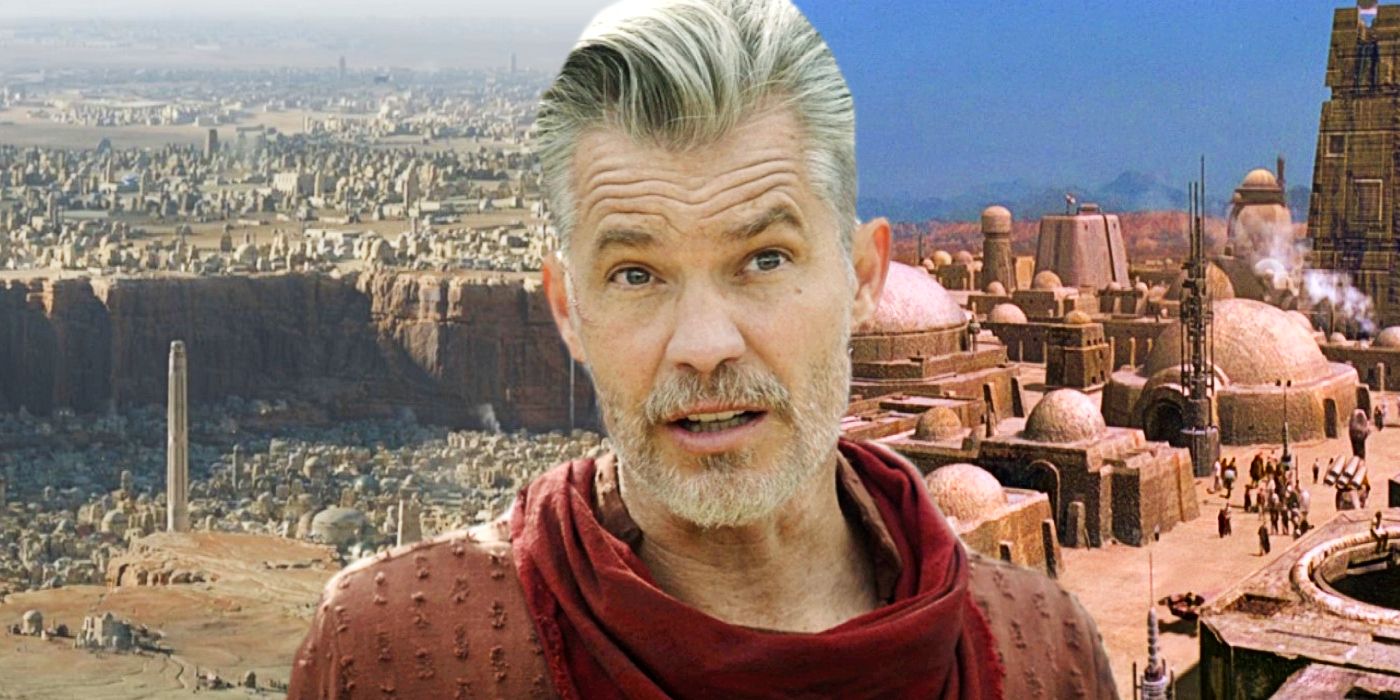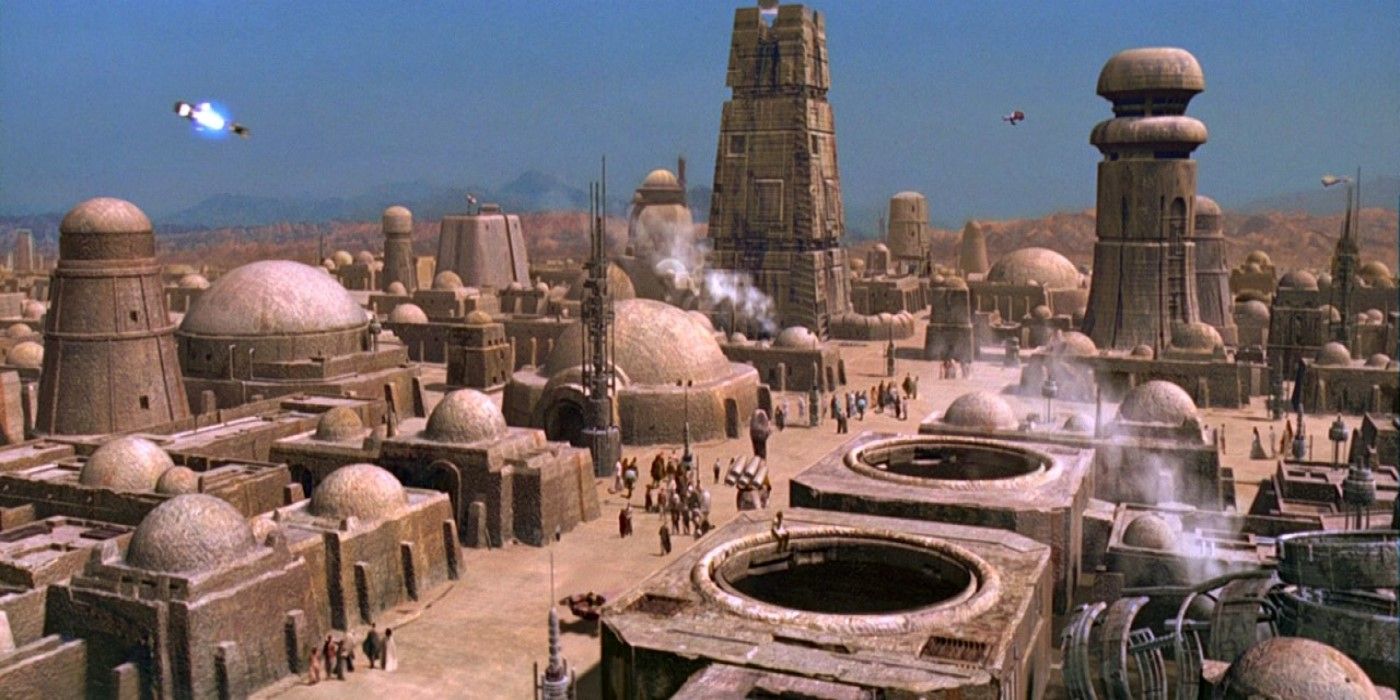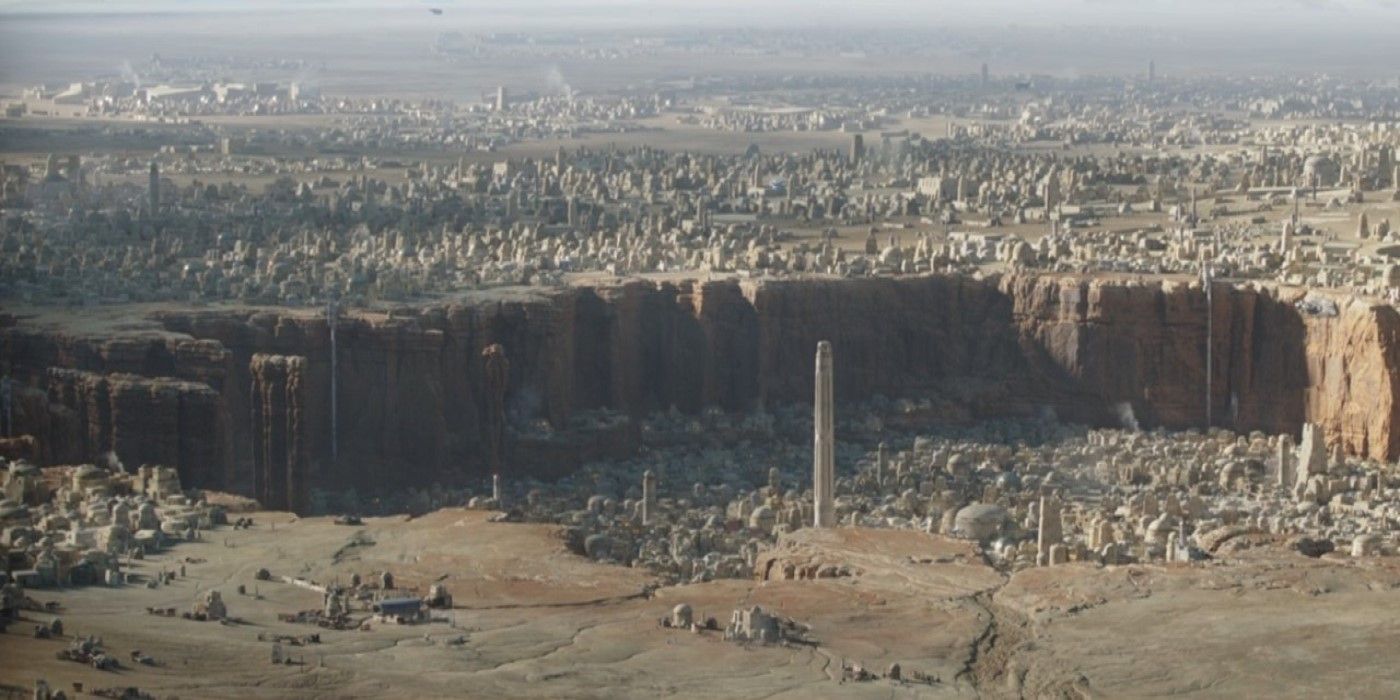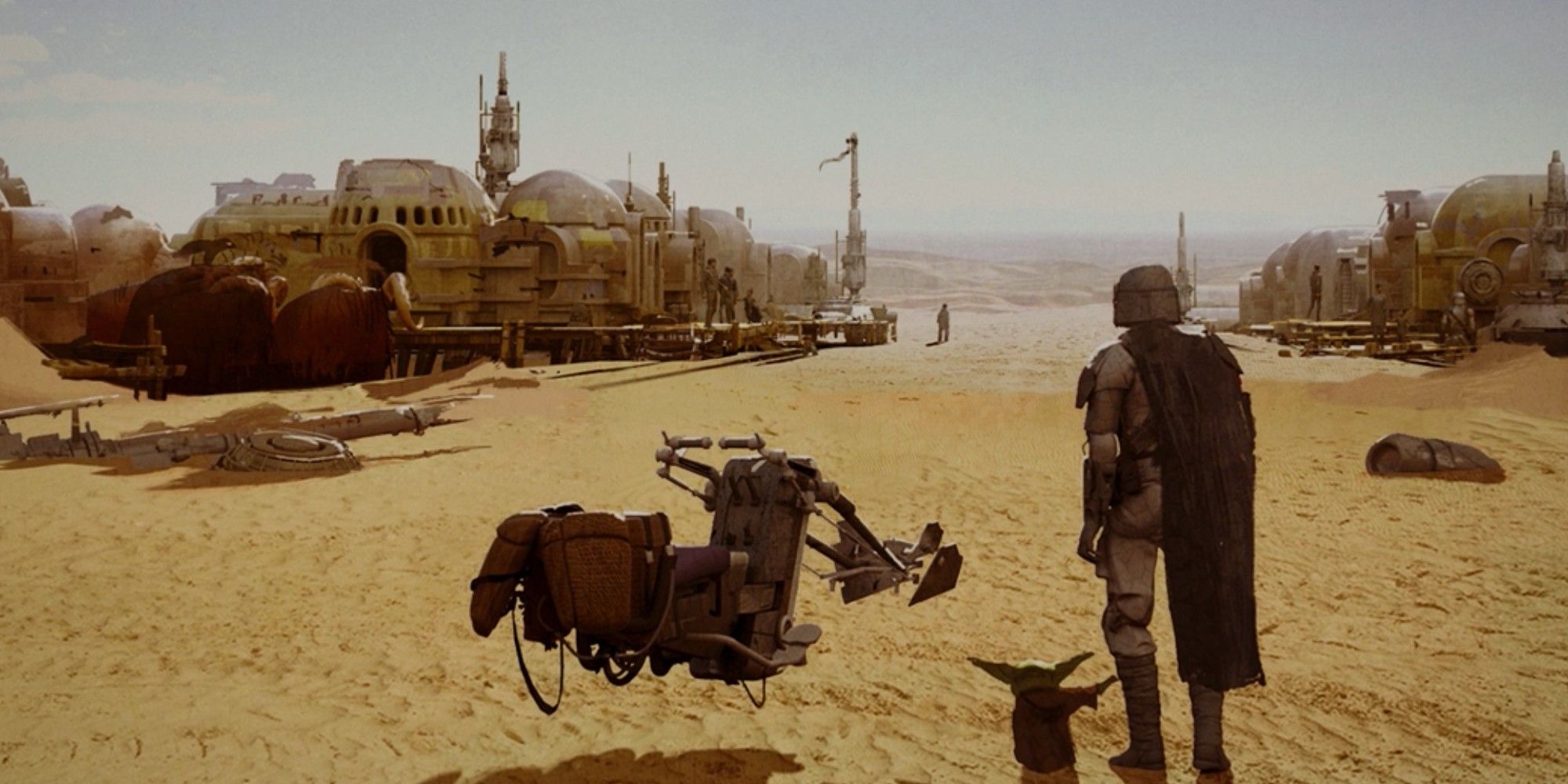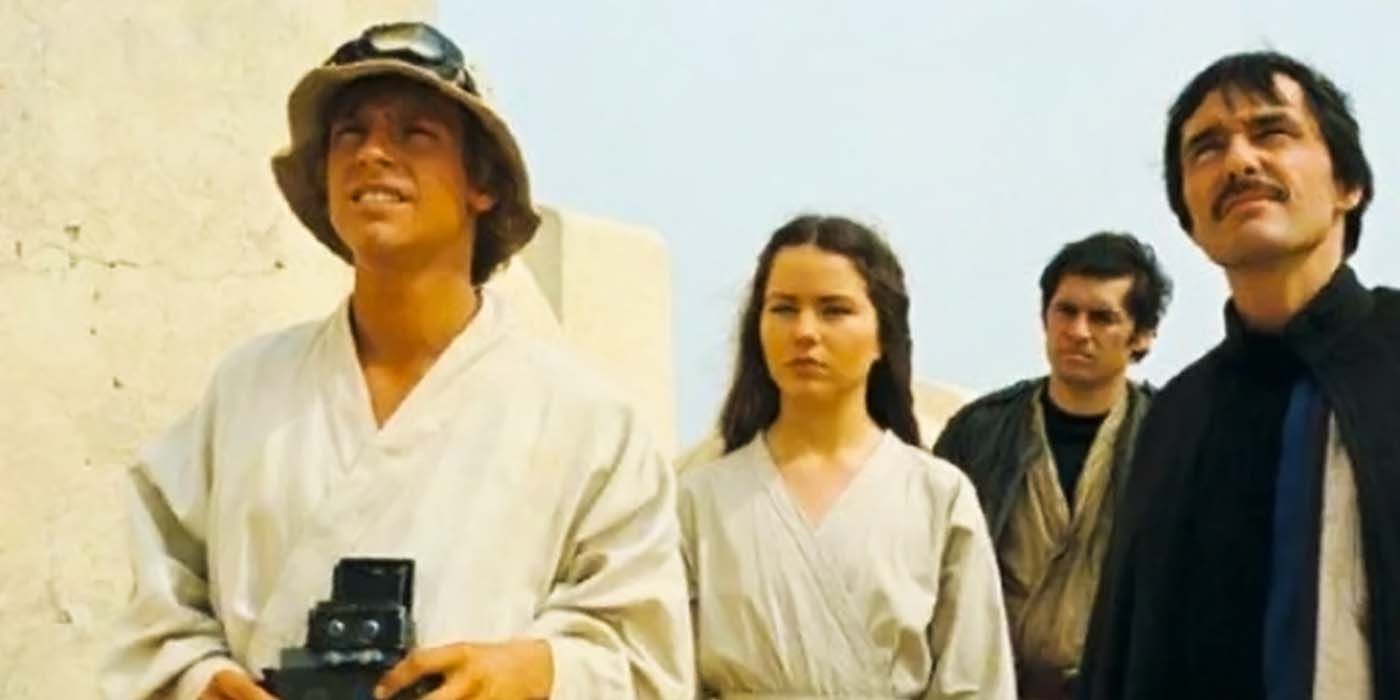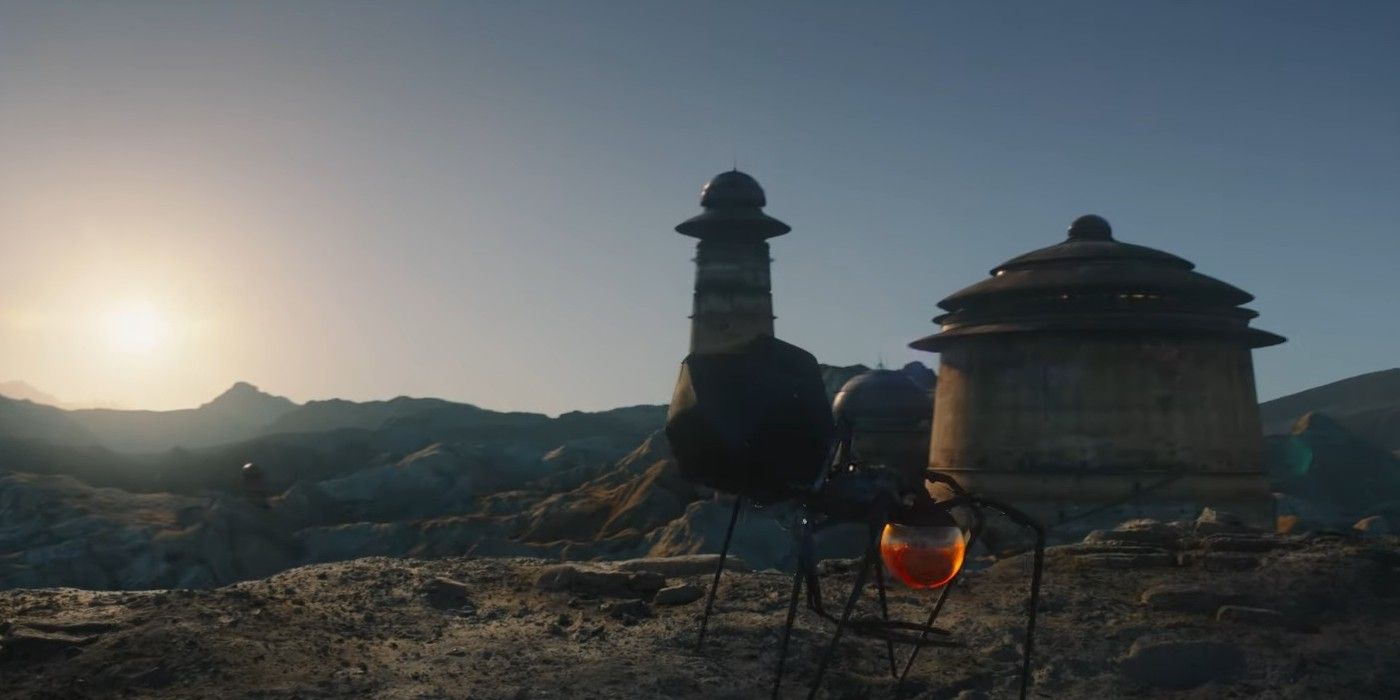Warning: Spoilers ahead for The Book of Boba Fett episode 6
Tatooine has been the main setting of The Book of Boba Fett, which highlights the differences between the desert world’s most famous locales, such as Mos Eisley, Mos Espa, and Mos Pelgo. While Luke Skywalker often bemoaned the unimportance of Tatooine in the first Star Wars film, the planet is easily one of the franchise’s most important planets, being the homeworld of Luke and Anakin Skywalker, as well as the sight of numerous key moments in the grander Star Wars saga. Tatooine has a large variety of cities and settlements that the movies and now The Book of Boba Fett have delved into, enriching the lore of Tatooine.
Tatooine is a harsh and unforgiving planet. While Luke Skywalker might have complained about his lack of excitement while growing up on the Outer Rim planet, anybody who can survive an upbringing on Tatooine is well-suited to the dangers of joining a rebellion of becoming a Jedi Knight. Tatooine had a diverse range of flora and fauna, most of which were extremely hazardous to humanoids. From gargantuan Krayt Dragons to the torturous sarlacc pit, to the unnamed multi-limbed reptilian monster that debuted in The Book of Boba Fett, some of the galaxy’s most dangerous creatures hail from Tatooine. But not all of the world’s dangers were creatures.
Tatooine’s sapient life was as hazardous if not more so than their creatures. Tatooine was a hub for the galaxy’s criminal underworld, with Jabba the Hutt headquartering his criminal empire on Tatooine and numerous swoop gangs, bounty hunters, smugglers, and outlaws frequenting the sparsely-populated planet. Boba Fett and Fennec Shand, who frequented Tatooine as bounty hunters for the Hutt Clan, commandeered the remnants of Jabba’s syndicate by the events of The Book of Boba Fett. While Fett returned to the galactic underworld after spending time in a Tusken Raider tribe, he’s brought an unusual sense of honor to the planet’s generally-unscrupulous populace as he grows his influence in Tatooine’s various cities and settlements.
Mos Eisley
Made famous in A New Hope, Mos Eisley was succinctly described by Obi-Wan Kenobi as a “wretched hive of scum and villainy.” Indeed, some of Tatooine’s most dangerous criminals frequent the spaceport, but skilled pilots like Han Solo and Chewbacca, as well as benevolent citizens like Peli Motto, make Mos Eisley more than just a den of degenerates. The best-known locale in Mos Eisley is its cantina, where Obi-Wan and Luke met Han Solo and Chewbacca, as well as where Luke ran afoul of a pair of criminals, Dr, Evazan and Ponda Baba, who Obi-Wan defeated with his lightsaber in a brief bar fight. The poor reputation of Mos Eisley is known to locals like Cobb Vanth, who noted it in The Book of Boba Fett.
Mos Espa
Mos Espa debuted in Star Wars: Episode I – The Phantom Menace, as the home of Anakin and Shmi Skywalker. While not nearly as lawless and brutal as Mos Eisley, Mos Espa was still a dangerous location, with the Hutt Clan appearing to have kept a tighter grip on the settlement before the death of Jabba the Hutt. Mos Espa’s arena was the sight of The Phantom Menace’s beloved podracing sequence, in which a young Anakin won his freedom with the help of Qui-Gon Jinn. Mos Espa is frequently shown in The Book of Boba Fett, with Fett butting heads with the spaceport’s mayor as he betrays him to the rival Pyke Syndicate, who seek to commandeer Tatooine from Fett’s control, not taking him as seriously as they did Jabba. While Mos Espa is part of Boba Fett’s territory, the city is divided into multiple subgroups, led by Fett’s criminal vassals.
Mos Pelgo, a.k.a. Freetown
Mos Pelgo debuted in the Aftermath novels, but made its first live-action appearance in season 2 of The Mandalorian. A small and unassuming Tatooine settlement, Mos Pelgo’s populace was celebrating the Empire’s defeat at the Battle of Endor, only to be oppressed by the Mining Collective, who enslaved them. Cobb Vanth, a local sheriff, acquired Boba Fett’s armor from Jawas and repelled the Mining Collective, freeing the town and leading to it being renamed “Freetown.” Boba Fett, as a man of honor, might have left Freetown out of his criminal activities due to his respect for Cobb Vanth, a valiant defender of its people. The Pyke Syndicate, however, intends to include Freetown in its spice trade, sending the deadly bounty hunter Cad Bane to intimidate its populace into submission. Mos Pelgo, notably, is a rare example of content that originated in canon but later became part of the Legends continuity.
Anchorhead & Tosche Station
Luke Skywalker infamously mentions Tosche Station in A New Hope, claiming to want to visit the station on an errand for his Aunt and Uncle but truly meaning to hang out with his friends there. Tosche Station was featured in a deleted scene from A New Hope, in which Luke alerts his friends to a space battle overhead (Darth Vader’s ship, the Devastator, pursuing the Tantive IV) and reunites with his best friend, Biggs Darklighter. The station, as well as two of Luke’s friends, made their official live-action debut in The Book of Boba Fett, in which they were terrorized by a swoop gang who Fett fended off. In Legends, Tosche Station was located within the small town of Anchorhead, and this is possibly the case in canon as well. Anchorhead is a small Tatooine town, similar to Mos Pelgo due to its relative safety from Tatooine’s harsher criminal elements.
Other Tatooine Locations In Star Wars Canon
One of Tatooine’s most famous locales is the Lars Homestead, a moisture farm and the home of both Luke and Shmi Skywalker at various points. Another key location is Jabba the Hutt’s Palace, a former B'omarr Monk monastery, that became Boba’s Palace by the events of The Book of Boba Fett. The palace served as the headquarters of Jabba’s criminal empire and features a trap door for feeding Jabba’s (and later Boba’s) enemies to a rancor. Jabba’s other famous method of execution was taking prisoners to the Great Pit of Carkoon in the Dune Sea, feeding them to the sarlacc that lurks within the pit, though Boba Fett and Fennec Shand killed the sarlacc with one of the Slave 1’s seismic charges in The Book of Boba Fett.
New episodes of The Book of Boba Fett air Wednesdays on Disney+.

